Finding Common Ground
Syracuse home to faculty-mentored, interdisciplinary research in humanities
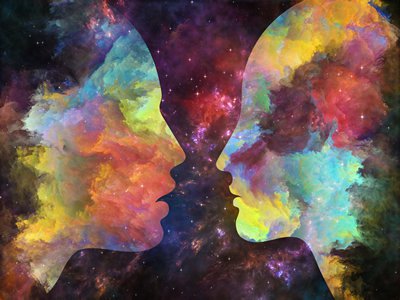
The following is the second installment of a four-part series about humanities research at Syracuse University. The first installment looked at the value and importance of such work. This one provides snapshots of individual student research.
Emma Ettinger ’17 is a self-professed “Shakespeare nerd.” Before graduating in May, she produced a seven-woman play, adapted from 10 of the Bard’s histories. “And the Women Cried” evolved into her Capstone Project in the Renée Crown University Honors Program, and enjoyed a weeklong run on campus by the Black Box Players.
“I am conscious of and passionate about giving women more of a voice, onstage and off,” says Ettinger, a stage management major in the College of Visual and Performing Arts (VPA)’s Department of Drama. “For my Honors Capstone, I found a rich set of speeches in which wives, mothers and daughters of warring noblemen reacted to and shaped their plays’ events. I then devised a script from Shakespeare’s texts, putting moments from these women’s lives in conversation with one another.”
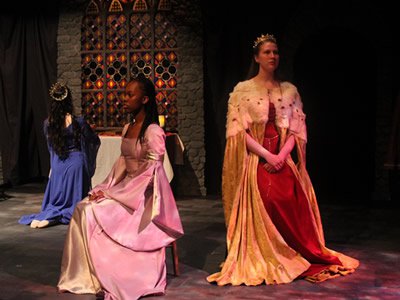
A 2017 University Scholar, Ettinger devoted three years to that script, searching for iconic female voices, such as Joan of Arc’s and Catherine of Aragon’s, amid a sea of masculine dominance. She wanted to show how women have shaped political, cultural and economic history, and was intent on finding superb women actors to play the roles.
Ettinger was surprised to learn that, for all their apparent power in the public and private spheres, medieval queens received short shrift. Many individual histories were lost or unrecorded. Moreover, Shakespeare was writing at a time when female parts were played by male actors.
She believes everyone should have a platform to speak his or her mind. “Be it an indigenous perspective, a disability perspective or a marginalized group whose perspective is missing, it’s important to ask why we don’t hear the other side of the story,” says Ettinger, currently interning at Princeton’s McCarter Theatre Center after a summer gig at Ithaca’s Hangar Theatre. “The humanities empower us to form connections with our fellow human beings across lines of race, class, culture, gender and sexuality. They present us with an ever-important window into empathy for those who are not like us.”
Ettinger is among a growing number of students and scholars who do not see the humanities in competition with other fields, particularly science and math. That is not to say silos do not exist—they abound in most colleges and universities. Ettinger simply wants open-ended inquiry and analysis, cultivated by the liberal arts, to complement the problem-solving skills of STEM (science, technology, engineering and mathematics). It is no coincidence that one of her favorite Honors courses was Linked Lenses: Science, Philosophy and the Pursuit of Knowledge, co-taught by Cathryn Newton, a scientist, and Samuel Gorovitz, a philosopher.
“Far too often, the humanities are thought of as ‘soft,’ compared to STEM, or the ‘hard sciences,’” Ettinger continues. “Math and science can be equally theoretical, and the humanities, equally rigorous. I didn’t choose an arts degree because I didn’t have the skills or the drive to succeed in STEM. I chose it because I was passionate about theater, and wanted to devote my energies to making art and telling stories.”
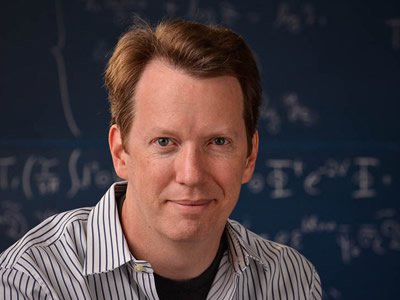
Sean Carroll, a noted theoretical physicist at Caltech, has spent most of his career using the skills and values of the humanities to explain science. During a recent phone call from his office in Pasadena, he cites the cautionary tale of C.P. Snow, an English scientist and novelist, who, in 1959, grumbled about the “gulf of mutual incomprehension” between scientists and humanists. Snow’s thesis, later published in book form as “Two Cultures and the Scientific Revolution,” argued that these groups fail to understand one another and uphold different values.
Carroll says the response to Snow’s “call for action”—in which scientists and technologists have a responsibility to solve the world’s problems—was fierce. Even though Snow later revised his thinking to include a mediating third culture, the schism between scientists and humanists has persisted. Some maintain that the controversy has become less about the rift and more about society's need for liberal arts literacy in general.
“C.P. Snow was trying to convince people that they should be literate about literature and science,” says Carroll, author of The New York Times bestseller “The Big Picture: On the Origins of Life, Meaning and the Universe, Itself” (Dutton, 2016). The 2015 Guggenheim Fellow suggests that science and the humanities can learn a lot from each another. “The one example Snow chose as something everyone should know was the Second Law of Thermodynamics, which says, in simple terms, entropy increases. The fact you are born young and grow old or that you can remember today but not tomorrow is because of entropy, which helps us make sense of the arrow of time.”
The concept of entropy permeates the study and practice of music, art, literature, language, religion and philosophy—in short, everything used to grasp the human experience. Carroll has devised a framework for understanding how the universe moves and evolves. He calls it poetic naturalism.
“The poet Muriel Rukeyser once wrote, ‘The universe is made of stories, not atoms,’” Carroll says. “This is absolutely correct. There may be only one world [a philosophy known as ‘naturalism’], but there are many ways of talking about it, using different theories and models, vocabularies and stories. ‘Poetic’ implies we have a choice. … I think Snow was trying to say that the sciences and humanities had grown apart. Yet both are part of our common civilization because they complement one another.”
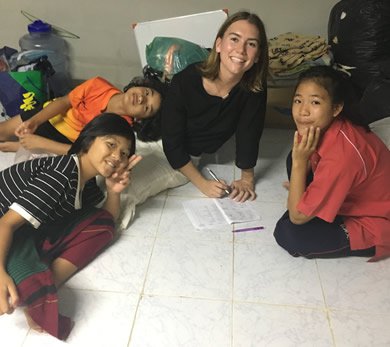
Students often learn about Snow’s “Two Cultures” thesis at some point in their undergraduate training. For Ettinger and Kait Hobson ’16, such exposure came via Honors, an all-University program in the College of Arts and Sciences (A&S). “I realized early on that the gap between the sciences and humanities is a misnomer. It is a perception problem creating false barriers between fields with much to offer,” Ettinger says.
Like her classmate, Hobson is a Linked Lenses alumna and a voracious reader. Thus, she was ecstatic to make author Virginia Woolf the focus of her Honors Capstone Project. Drawing on her twin interests in history and wartime mourning rituals, Hobson used the project to deepen and extend her scholarly range. It also set the stage for her successful application for a Fulbright English teaching assistantship in Thailand.
Traveling abroad is nothing new to the 2016 Commencement student speaker. As part of her Capstone research, Hobson spent 12 days in England, poring over rare books and manuscripts about shell shock and neurasthenia during the First World War.
“Among the many devastations of the Great War was an obliteration of soldiers’ bodies from artillery warfare, resulting in the interruption of Victorian mourning rituals that depended on and were performed around the [physical] body,” says Hobson, who dual-majored in English in A&S and magazine journalism in the Newhouse School of Public Communications. “The war’s devastation prevented soldiers’ bodies from being returned home to be interred, and interrupted Victorian conventions of mourning—a situation that, I argued, provoked a response from the British government to institute the Tomb of the Unknown Soldier at Westminster Abbey. This led to the elevated status of fallen soldiers, fueling a war myth … [that] their deaths were heroic or meaningful.”
A turning point in Hobson’s research came at London’s Imperial War Museum, where she discovered an unpublished memoir by Hiram Sturdy, a gunner in the Royal Artillery. The frank violence in Sturdy’s memoir, combined with Woolf’s modernist approach to the title character in her wartime novel “Jacob’s Room” (1922), gave Hobson new insight into the rapidly transforming rituals of bereavement. “Both books rejected the mythologizing of dead soldiers, and re-established a private aspect to mourning,” she explains.
Hobson credits the project for showing her how literature and creative writing can empower people to work through “incomprehensible tragedies.” That some respond to tragedy, she argues, by picking up a paintbrush, sitting down at the piano or cracking open a notebook reinforces this idea.
Hobson's project also reinforced her sense of empathy—a fundamental learning outcome of the humanities and the bedrock of participatory democracy. “Actually listening, not translating a person’s experience into your own terms, requires a great deal of effort and extra work in today’s media landscape,” says Hobson, who has been teaching English in rural northern Thailand since last fall. “Great writers understand their character’s or source’s perspective, and listen well enough to empathize with them.”
Being the only foreigner in a small Thai village has been enlightening to Hobson, especially since that country’s English proficiency is among the lowest in Asia. She admits, however, that her lack of fluency in Thai sometimes makes her "feel like a child" in social situations. When this happens, she listens intently and observes nonverbal cues to infer what others are saying, thinking or feeling.
“Intercultural education is as important as ever because it pushes us out of our own frame, and supplies a diverse forum for understanding other people,” Hobson says. “When you’re isolated in a foreign culture, everyone is different from you—you’re surrounded by differences, but are striving to look for similarities. Context is important, too. At Syracuse, an accomplishment was an ‘A’ on a paper; in Thailand, it’s returning home from my local market with a frozen chicken instead of a live frog. If we are quiet and listen, we can find common ground with people who are not like us.”
Rick Cieri ’17 and Andrew Scheuer G’17 also participate in the Fulbright English Teaching Assistant (ETA) Programs. They are like Hobson in that they have gone abroad seeking mutual understanding with other people. Cieri and Scheuer consider themselves cultural ambassadors in the guise of teaching assistants in Spain and Argentina, respectively. Much of their work occurs at the nexus of the arts, humanities and social sciences.
Cieri is distressed by President Trump’s proposed elimination of various programs and agencies, including the Fulbright-Hays Program, one of two major international education programs administered by the U.S. Department of Education. “The Fulbright ETA Programs facilitate positive relations with other countries via education and cultural communication,” says Cieri, who also spent a year in São Paulo (Brazil) on a prestigious Boren Scholarship. “When we develop an appreciation for other people, including their languages and cultures, we are more likely to understand and have amiable relations with them. The Fulbright Program teaches students from around the world that there is more to the United States than what is portrayed on the news.”
A dual major in modern foreign language in A&S and international relations in A&S and the Maxwell School of Citizenship and Public Affairs, Cieri is proficient in French, Italian, Spanish and Portuguese. His humanities education, and the diverse cultural and international experiences it has offered, provides a remarkable foundation as he embarks on a career in human rights.
Scheuer also is a polyglot, committed to social change in the classroom. His command of Spanish and German is integral to his work in English as a Foreign Language (EFL), one of the fastest growing sectors of Argentine higher education. Scheuer thinks the Fulbright ETA Programs are vital to national security and cultural diplomacy. “These programs create one-on-one interactions that provide a platform for dialogue,” says Scheuer, who earned a master’s degree in Spanish language, literature and culture. “It is only through dialogue and the recognition of what we have in common with others that we change the way we see ourselves.”
He has an unusual asset in his quest to promote American cultural diplomacy—lacrosse. Having founded a team in the Spanish city of Salamanca, where he taught English as an undergraduate, Scheuer plans to coach in Argentina. He considers sports, like the humanities, a way of opening the curtain on human behavior and human nature.
“The Fulbright program gives me an opportunity to experience, firsthand, what life is like here,” says Scheuer, also a professional translator. “It enables me to build on my work experience and improve as a teacher. I wouldn’t trade it for the world.”
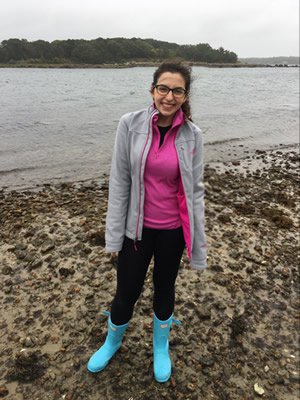
The learning experience of students in the humanities is flourishing at Syracuse. Vivian May, director of the Humanities Center in A&S, attributes this to the University’s “holistic approach” to training scholars and producing scholarship that benefits culture and society. The key, she says, is “collaborating with and crossing over to" areas that reflect the internal strength of the humanities and promote their social value.
At Syracuse, such activity resides in academic departments and programs. Chief among them is Honors, where the faculty-mentored Capstone Project provides unparalleled research opportunities. Jennifer Shulman ’17 studied the Greek historian Herodotus, figuring out how he incorporated myths, folktales and rumors into his landmark text “The Histories.” This research experience cemented her decision to attend graduate school and pursue a career in academia.
“One of the most common misconceptions about classics is that it’s all about the past,” says Shulman, who triple-majored in classics, classical civilization and English and textual studies in A&S. “In reality, studying ancient history is a way of holding up a fun-house mirror to reflect all eras of Western civilization. Likewise, studying Herodotus’ historiography provides valuable lessons in how we write about ourselves and our enemies—lessons still applicable today.”
Shulman says Honors gave her numerous opportunities to connect the sciences and the humanities. One of them was The Science of Shipwrecks, taught by Cathryn Newton, dean emerita of A&S, an interdisciplinary and Earth sciences professor, and special advisor to the Chancellor and Provost for faculty engagement. The course examines history’s most fascinating wrecks through an interdisciplinary lens, culminating with a hands-on research experience at sea via the Woods Hole Oceanographic Institution at Cape Cod, Massachusetts. “A shipwreck can be understood as a large fossil that sinks to the bottom of the sea, much as a deceased whale becomes part of the fossil record. Our course uses coastal processes and marine technology to better understand cultural history,” Newton says.
Shulman praises Newton for bringing maritime history to life and personalizing it for her. “Not only do I understand the way a shipwreck is affected by ocean processes, but I also appreciate the history of the ship involved, its cargo and the people aboard,” Shulman says. “The sciences and humanities are so often taught in opposition to one another, but, in reality, they are closely linked. Honors enabled me to bring my love of history and literature into the sciences, while introducing me to new ways of understanding the world around me. The program has made me more empathetic."
This interdisciplinary approach permeates other areas of campus, including the A&S Center for Innovative Learning (iLEARN), which supports innovative educational programs and undergraduate research activities, and the Mellon-funded Central New York Humanities Corridor, a large-scale interdisciplinary program of the Humanities Center involving eight other institutions.
“Much of what we do is designed with students in mind,” says May, alluding to the Humanities Center’s graduate student fellowships and diverse programming, including Syracuse Symposium, a public events series revolving around an annual theme. (This year’s is “Belonging.”) “We demonstrate how the humanities are vital for pursuing enduring questions and for addressing pressing social issues,” she adds. “As you can imagine, this work is highly innovative and interdisciplinary, affecting almost every school and college on campus.”
Students are direct beneficiaries of this approach. Gerald Greenberg, senior associate dean of A&S, who oversees the humanities division, says that, from day one, students singly enrolled in A&S or dually enrolled in Newhouse or the School of Education (SOE) are enriched by the humanities through the Liberal Arts Core.
“It’s called ‘the core’ for a reason: It is the center of everything, and everything relies on it—not only in the arts and sciences, but also beyond,” Greenberg explains. “Students at Syracuse glide through areas of the core, learning how to examine and analyze issues and phenomena, using methodologies from the natural sciences, mathematics, the social sciences and the humanities. As the heart of the liberal arts, the humanities support everybody, regardless of the fields they pursue. They help students develop broad perspectives, identify connections and critically apply different modes of intellectual inquiry. Consequently, students make better-informed choices about upper-division studies and have a stronger foundation for almost any future endeavor."
This also leads to a flurry of outstanding student research—from Rachel Bass ’16 analyzing gender and development in the Middle East, to Sean Jordan ’17 compiling a database of 18th-century benefit concerts in London for use in a forthcoming book chapter, to Rachel Brown Weinstock ’17 winning a research poster contest at a Rural Sociological Society meeting in Toronto. The list of examples is long.
The same is true at the graduate level. Graduate students are eligible for dissertation fellowships and public humanities fellowships through the Humanities Center and Humanities Corridor. The latter offers faculty and graduate collaborative research opportunities in philosophy; linguistics; visual arts and culture; musicology and music history; digital humanities; literature, language and culture; and archives and media.
Gregg Lambert, Dean’s Professor of the Humanities and director of the Humanities Corridor, says the Corridor enhances the profile, scholarly prominence and impact of the humanities throughout the region. “We do this through individual and collaborative teaching, research and public engagement,” he says, citing the involvement of more than 3,500 students, faculty and community members in some 200 activities a year. “For graduate students, the Humanities Corridor provides a unique opportunity to foster cross-institutional partnerships and resource-sharing mechanisms in emerging and established fields.”
Lambert references Jesse Quinn and Kishauna Soljour ’13, Ph.D. students in geography and history, respectively, in Maxwell. Quinn and Soljour were last year’s Graduate Student Public Humanities Fellows, whose research received support from the Humanities Corridor, the Humanities Center and Humanities New York (formerly the New York Council for the Humanities). Quinn used his fellowship to analyze industrial mining and resource extraction in the Adirondacks; Soljour produced a short film and oral-history collection about refugee experiences in Central New York.
“Their work reflects the excellence for which the University is known, but also shows the humanities’ vitality in a new way,” Lambert says. “Jesse and Kishauna are storytellers at heart, using visual mediums to capture histories and narratives that have been overlooked or underappreciated.”
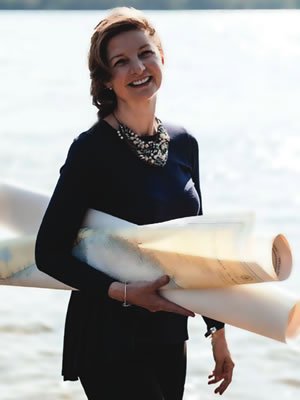
The humanities are highly visible at Syracuse. In many ways, they infuse A&S, Vivian May says. Witness the yearlong Syracuse Symposium and the newly expanded Milton First-Year Lecture Series, both of which foster an understanding of the humanities through seminars, workshops and performances, as well as less formal colloquia. (“Belonging” also is the focus of this year’s Milton series and SOE’s Landscape of Urban Education Lecture Series.) Some events react to the daily news cycle, others to broad strokes of history. Common to all is a thirst for knowledge and understanding.
For instance, the Community Folk Art Center is presenting a fall photographic exhibition titled “14 Black Classicists.” The show honors African American men and women who taught Greek or Latin at the collegiate level after the Civil War. Among them is Syracuse alumnus William Lewis Bulkley, the first African American to earn a Ph.D. in a classical language and the fourth African American to earn a Ph.D. in the United States. (After graduating in 1893, he was part of a group of public intellectuals who founded the National Urban League.) The exhibition includes visits by curator Michele Ronnick and Bulkley scholar Peggy Norris.
Joan Bryant, associate professor of African American studies in A&S, helped bring the show to CFAC. “These classical scholars made groundbreaking achievements in education after the Civil War,” she says, adding that the exhibition has traveled to nearly 50 other campuses since 2003. “Their accomplishments helped pave the way for future generations of African-Americans entering U.S. universities, regardless of their area of study.”
Kal Alston, CFAC’s interim executive director, considers “14 Black Classicists” timely, given recent racially charged events around the country. “There is no better time than now to revisit the writings of these individuals,” says Alston, also a professor in SOE and the Department of Women’s & Gender Studies in A&S. “These classicists were forged in the crucible of the Reconstruction and Jim Crow America. They were part of the first generation of black scholars to earn advanced degrees and to reflect publicly on the significance of a liberal arts education."
Romita Ray, associate professor of art history in A&S, hopes to attract students with a new, equally compelling series called “Creative Conversations," which brings together a humanist and a scientist with similar intellectual interests. The goal, she says, is to highlight the overlaps between the arts, humanities and sciences. The first “conversation” is “water + photography,” and takes place on Thursday, Nov. 2, in Watson Theater in partnership with Light Work. Faculty in conversation will be Jeffrey Karson, the renowned geologist in A&S, who has photographed the ocean floor, and Susannah Sayler, an associate professor of transmedia in VPA and co-founder of the Canary Project, which produces art and media dealing with ecological issues, such as water resources and climate change.
“This conversation will inspire us to think outside the box,” says Ray, who also chairs the Department of Art and Music Histories. “By looking at similar subjects through different lenses, we can foster new and exciting ideas and potential research collaborations. Communicating across disciplinary borders encourages us think boldly, broadly and deeply. It constitutes the very core of research in the humanities.”
William Osborne, a Ph.D. student in philosophy who teaches an interdisciplinary course in Honors, applauds such discourse. “Any vocabulary that applies to research seems to have interdisciplinary relevance,” he says. “I think a scientist or humanist can help one another avoid the things that interfere with the basic spirit of inquiry—unquestioning devotion to trends and current tech, the myopic dangers of ultra-specialization, anything else that affects fields indiscriminately. It’s tricky, considering the realities of bureaucracy and the business and politics of higher ed.”
As one who uses storytelling to convey scientific discoveries to a global public, Sean Carroll is cognizant of the links between the humanities and physics. “Science and the humanities show us there is more than one way of talking about the world,” he says.
Cathryn Newton agrees, noting how both areas are more about questions than answers: “If you cannot resolve solutions to your problems, formulate sharper questions, and then do the research."
The research landscape at Syracuse is rich, varied and innovative—and ultimately is strengthened and made more dynamic by students, May says. "By contemplating, studying and documenting the human experience, students help establish a vibrant intellectual community," she adds. "This has the power to touch lives and shape the future."
